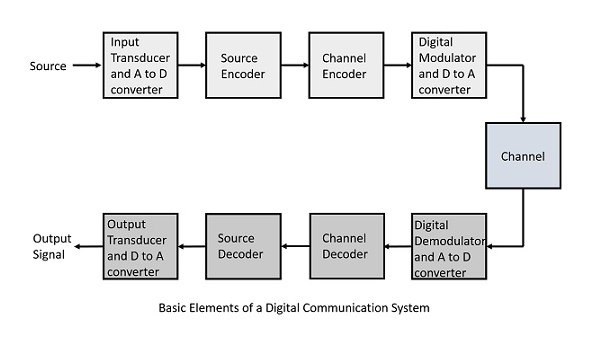Data communication is the transfer and reception of data over a point-to-point or point-to-multipoint communication channel. Examples of such channels are copper wires, optical fibers, wireless communication channels, storage media and computer buses. The data are represented as an electromagnetic signal, such as an electrical voltage, radio-wave, microwave, or infrared signal.
Analog or analogue transmission is a transmission method of conveying voice, data, image, signal or video information using a continuous signal which varies in amplitude, phase, or some other property in proportion to that of a variable. The messages are either represented by a sequence of pulses by means of a line code (baseband transmission), or by a limited set of continuously varying waveforms (passband transmission), using a digital modulation method.
The passband modulation and corresponding demodulation (also known as detection) is carried out by modem equipment. According to the most common definition of digital signal, both baseband and passband signals representing bit-streams are considered as digital transmission, while an alternative definition only considers the baseband signal as digital, and passband transmission of digital data as a form of digital-to-analog conversion.
Data transmitted may be digital messages originating from a data source, for example a computer or a keyboard. It may also an analog signal such as a phone call or a video signal, digitized into a bit-stream, for example, using pulse-code modulation (PCM) or more advanced source coding (analog-to-digital conversion and data compression) schemes. This source coding and decoding is carry out by codec equipment.
What are the uses of digital communication?
- Enhanced employee engagement and empowerment.
- Employees are able to work better and faster.
- Organizations can create and reinforce a shared purpose and values.
- Remote working is here to stay.
- A collaborative culture to drive success.
Why digital communication is important?
The costs of communication media on the Internet are significantly lower than those of more traditional media. Communication campaigns on new media are both simpler and faster. Digital is the most powerful way to reach as many people as possible in a minimum of time.
How does digital communication work?
Digital Communication is define as the process by which Digital devices communicate information digitally. In case if the communication needs to establish on distance, the analog signals are sent through wire, using different techniques for effective and efficient transmission.
What are the goals of digital communication system?
The main goal of a digital communication system is the transfer of time-varying, information-bearing signals, such as voice signals, computer data, image files, video clips, and multimedia information.
Why do businesses use digital communication?
Customers are now able to contact businesses at a time that is convenient to them. Improved productivity – digital communication makes it possible to solve many problems with production machinery remotely, eg screen sharing to address computer issues. This reduces costs and lessens the impact of equipment breakdowns.
What are the advantages of digital?
Digital technology makes it easy to stay in touch with friends, family, and work remotely, even if you are in another part of the world. You can communicate by words, video, audio, and exchange other media. Websites, apps, and software have all created to help users to socialize.
What are the disadvantage of digital communication?
- There is high power consumption in digital communication.
- A requirement for synchronization in the case of synchronous modulation.
- There is a sampling error.
- The most common limitation of digital communication is that it requires more transmission bandwidth.
What are the basic elements of a digital communication?
- Source.
- Input Transducer.
- Source Encoder.
- Channel Encoder.
- Digital Modulator.
- Channel.
- Digital Demodulator.
- Channel Decoder.
What is the purpose of digital technology?
Digital technology can help improve communication, collaboration, content management, access to analytics data and social networking as well as staff and customer experience. Successful enterprises are embracing technology to create digital workplaces that improve business cohesion.





